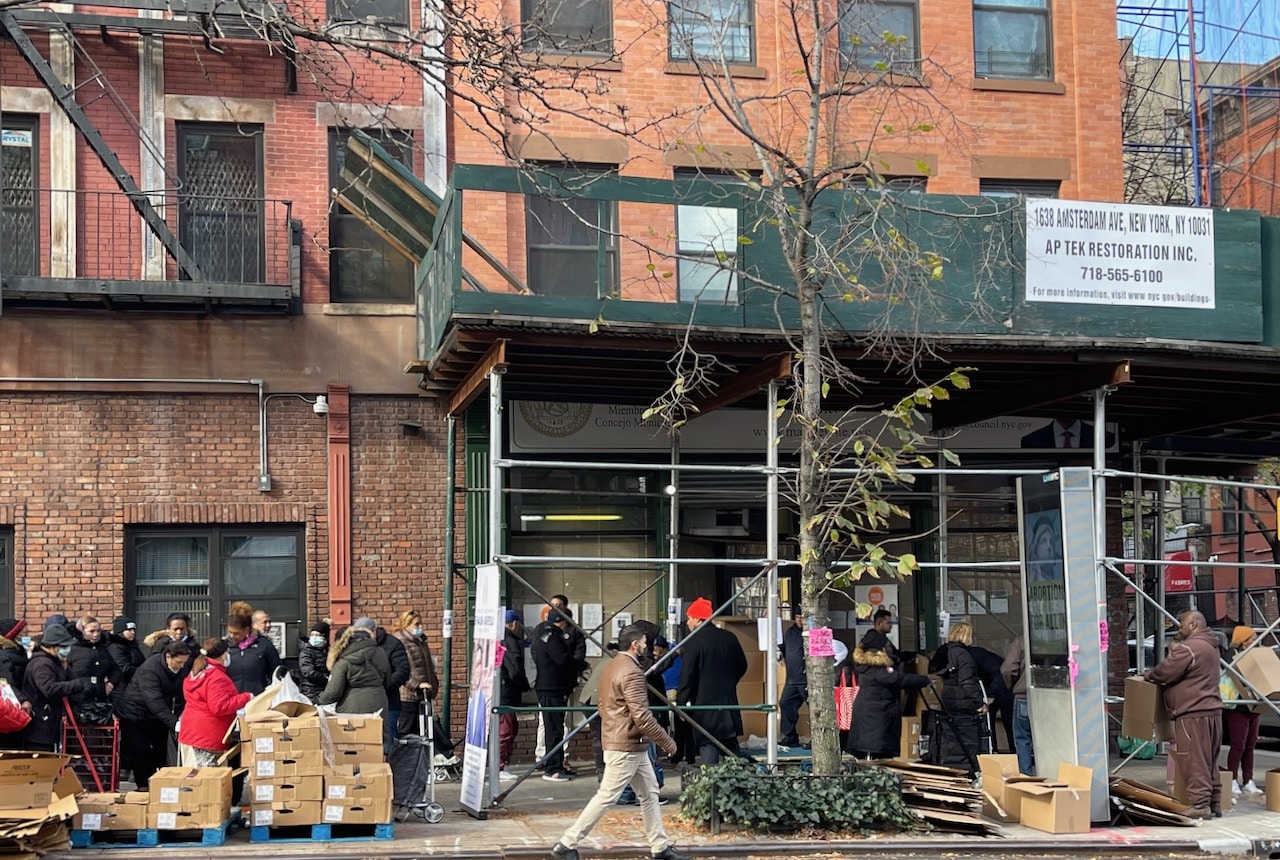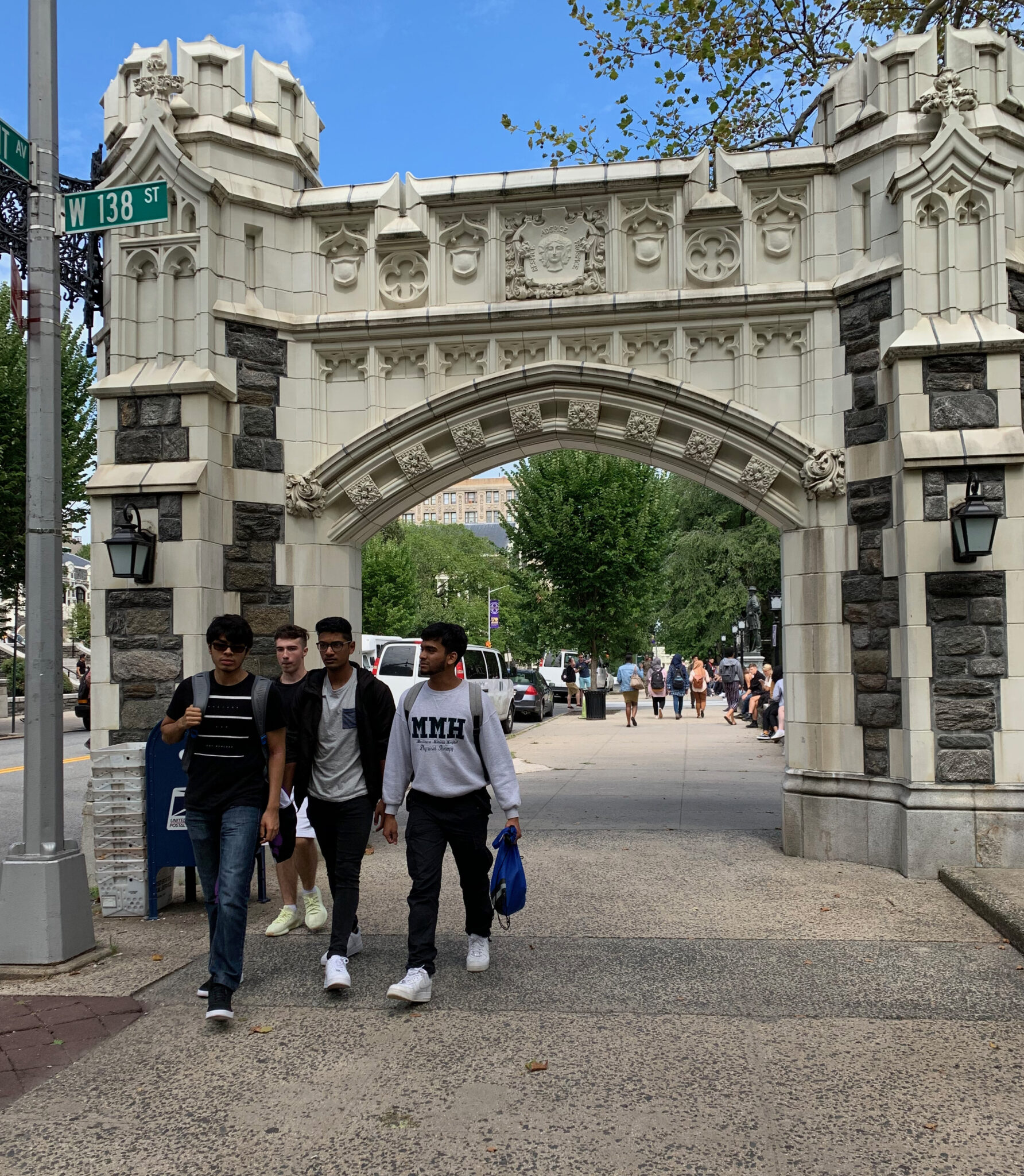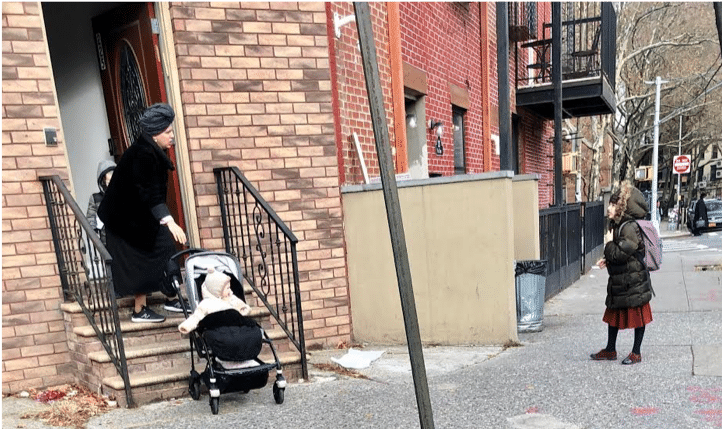People regularly line up for food pantries in New York City.
At 3 a.m., long before the sun rises, people begin lining up outside St. Mark’s Episcopal Church in Jackson Heights for their monthly food distribution event. By 8 a.m., hundreds are gathered in the cold. Jennifer Florez, a vestry member and longtime volunteer at the church says the pantry used to mostly serve the elderly. After the pandemic, she noticed that the line included families, working adults, and parents with young children.“Before COVID, we used to get about 100 people,” she said. “After that, it jumped to 400 or 500.”
The data confirms what community workers like Florez see every day. Since the pandemic, food insecurity, which is the lack of consistent access to enough food for a healthy lifestyle, has worsened. A 2024 report from the Robin Hood Foundation found that pantry usage in New York City remains significantly above pre-COVID levels. “Before the pandemic, 20% of adults and 24% families with children in New York City used a food pantry at least once in a typical three-year period.” Since 2020, those numbers have risen sharply to 31% of adults and 40% of families with children accessing a food pantry within three years.
Food insecurity no longer affects just the unemployed, elderly, or deeply impoverished, but increasingly affects working New Yorkers struggling to keep up with the city’s soaring food costs. The report reveals the profile of pantry users has broadened since the pandemic, with 67% now being working adults—underscoring how food insecurity increasingly affects those with steady employment.“Even people with jobs are coming to the pantry now,” said Colette Cornelius, 58, director of the “5 Loaves 2 Fish” pantry at Leviticus Church of God in Christ in Ozone Park, Queens. She added, “Food prices are just too high.”
Since March 2020, grocery prices have risen nearly 20%, while citywide rent has increased by 15%, according to the Food Bank of New York City. “Both housing costs and food prices have skyrocketed,” said a rent examiner who wishes to stay anonymous. “People may have to choose between paying their rent and buying food. Some may not afford either.”
These overlapping burdens are creating a cycle of hardship. A 2020 study published in the Journal of the Academy of Nutrition and Dietetics found that families who experienced food insecurity were 62% more likely to later face housing instability, even when controlling for other risk factors such as family income, level of education, and occupational standing. The reverse was also true: housing instability led to a 40% increased likelihood of food insecurity. These two crises, the researchers argue, are “highly correlated.”
The research suggests that integrated aid systems could be more effective in addressing both forms of instability simultaneously, noting “currently, programs designed to reduce food insecurity and housing instability function in isolation. Consolidating antipoverty programs or increasing referrals to various programs may help to reduce these two types of economic hardships.”
Florez is no stranger to food insecurity herself. “I’ve been through difficult periods of my life,” she said. But as food and rent prices continue to increase, she worries if St. Mark Episcopal Church’s pantry can meet the needs of her community.
“We’re barely staying afloat,” Florez admitted.
In March, the U.S. Department of Agriculture (USDA) announced over $1 billion in cuts to vital federal programs that enabled food banks to purchase fresh, locally sourced food from farmers. Just a month later, President Trump eliminated $500 million in already-approved funding for food banks through the Emergency Food Assistance Program (TEFAP).
We’re doing what we can,” said Florez. “If funding gets cut again, we might not be able to keep this pantry running.”
Tags: Food Bank of New York City food banks food pantries food prices grocery prices Leviticus Church of Christ in God Maryam Ilyas Robinhood Foundaton St. Mark's Episcopal Church St. Mark's Episcopal Church Jackson Heights
Series: Community






